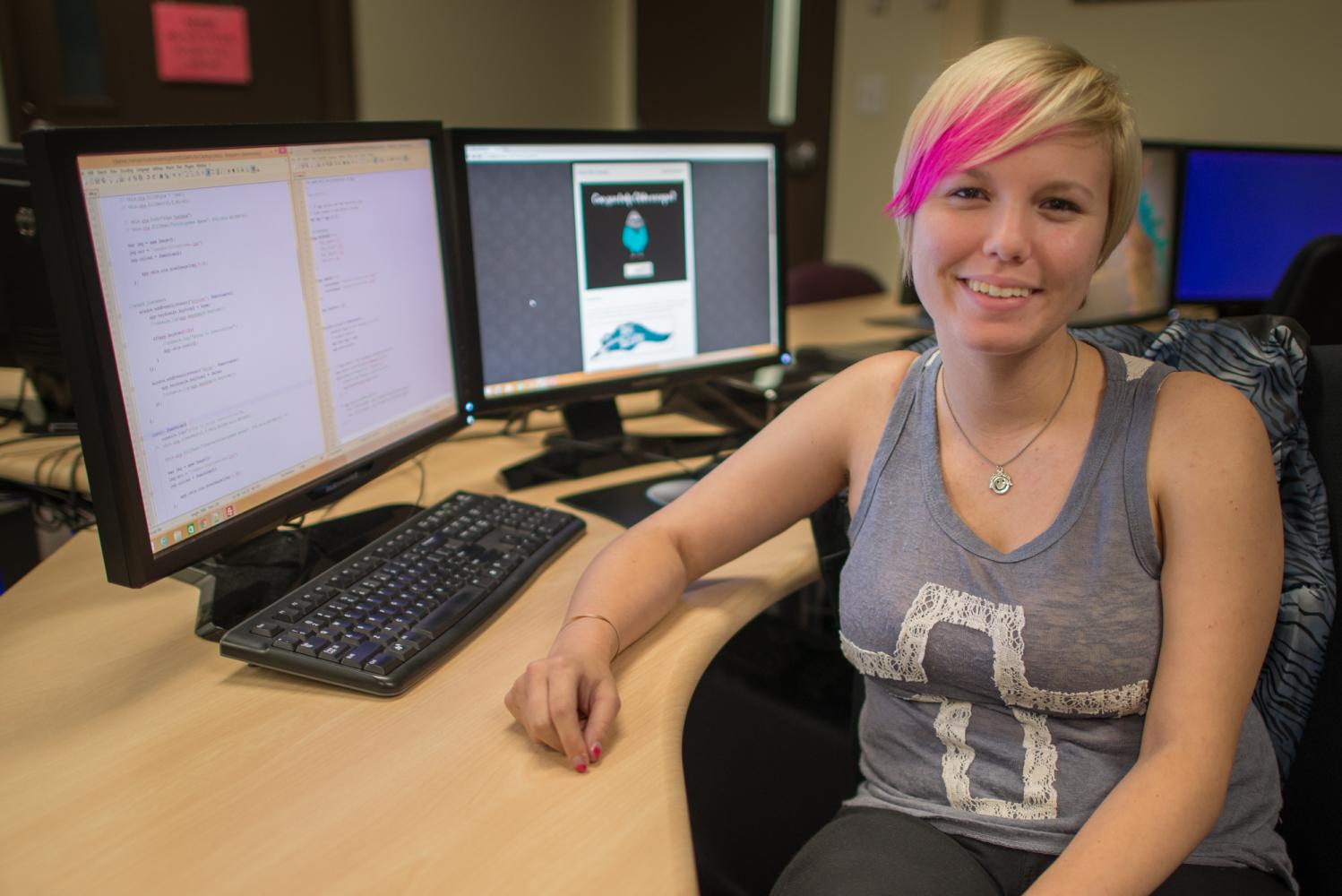Two female IGM students at RIT, fourth year Katie Tigue
The lack of programming education in high schools geared toward girls in particular is a huge reason for this gender disparity. In a high school computer-aided design class on Long Island,
McGraw credits her success and equality to peers with her involvement with the Computer Science House since her first year. Two older male classmates took her under their wing to teach her the ropes of programming and developed a sense of protectiveness towards her. In her perception, this was not due to her gender, but more to her lack of programming knowledge, and they wanted to make sure she would be able to keep up. However, she thinks a male in this same situation would have been thrown out more on his own to learn for himself.
Despite the many feelings of camaraderie and equality, McGraw stated that “It’s easy to get pushed around if you’re quiet.”
Class and lab time also solicits unwarranted
Given the scattered few females in the program, there are often clashes. There are rarely more than five females in any given class.
I've noticed a similar phenomenon being in a female-dominated major myself. The importance of balancing the gender ratios is constantly being preached to us, and there is an increased sense of competitiveness between males. Due to the value men bring based solely on their gender, there is favoritism similar to what the female Game Design majors experience.
In Game Design, it’s very much every woman for herself, and according to McGraw, girls can be even more sexist than men – against themselves. Tigue,
Whenever McGraw or Tigue is offered a position or given an award, they wonder if it’s just because they are female. McGraw won an award at ImagineRIT for an Oculus Rift Racing Simulator and Tigue was offered more interviews at the Game Developers Conference as a third year student than some male graduates.








